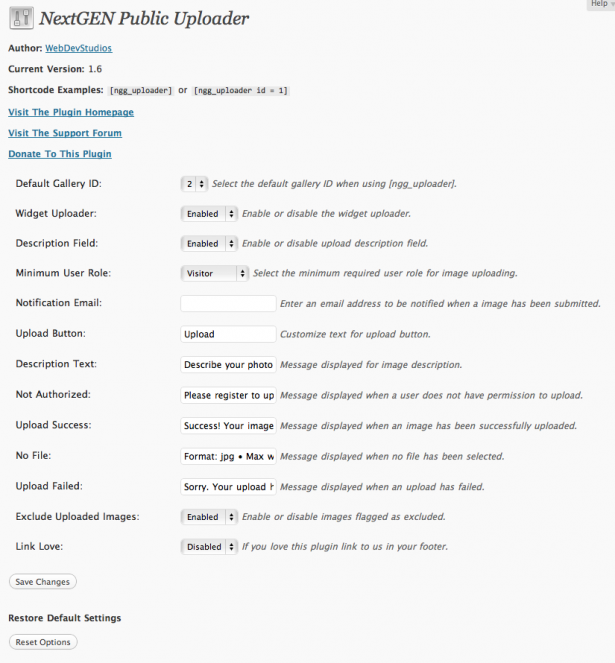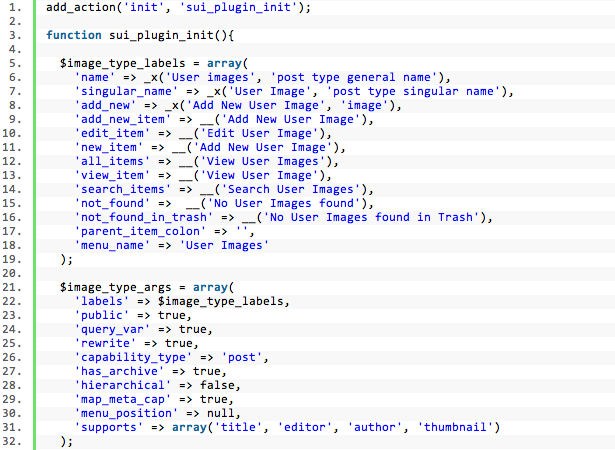WordPress plugins for user-submitted & user-generated content
 It’s 2012, and more and more sites and blogs are looking for ways to further their user’s involvement, many taking example from, perhaps, one of the more polished of these sites, Buzzfeed.com.
What makes Buzzfeed different from sites such as Digg.com, which offers users a chance to vote on articles pulled from all over the web (the recent, highest rated articles, being the ones posted on the front page), is that it provides a front-end interface through which users can post their own articles, along with a similar style system to Digg, allowing you to share your ‘reaction’ on other articles.
Buzzfeed succeeds in creating a clean user experience for submitting content to their site, and using the examples below, you can learn how to do the same with your WordPress site or blog. There are various methods that can be used, ranging from the built-in system to numerous plugins, enabling various types of user content contribution.
It’s 2012, and more and more sites and blogs are looking for ways to further their user’s involvement, many taking example from, perhaps, one of the more polished of these sites, Buzzfeed.com.
What makes Buzzfeed different from sites such as Digg.com, which offers users a chance to vote on articles pulled from all over the web (the recent, highest rated articles, being the ones posted on the front page), is that it provides a front-end interface through which users can post their own articles, along with a similar style system to Digg, allowing you to share your ‘reaction’ on other articles.
Buzzfeed succeeds in creating a clean user experience for submitting content to their site, and using the examples below, you can learn how to do the same with your WordPress site or blog. There are various methods that can be used, ranging from the built-in system to numerous plugins, enabling various types of user content contribution.
1. Roles and Capabilities
The number one technique for enabling and controlling user-submitted content on WordPress is the built in Roles and Capabilities system, which can be accessed and altered through the General Settings and Users tabs. This system offers 5 (6 if part of a WordPress 3.0 Multisite Network) categories users can be placed into: (In order of importance) Super Admin - This role gives access to the same features as a standard Administrator, but across any different other sites in a network. Administrator - Has access to the full controls of a given site Editor - Can publish and manage posts and pages as well as manage other users' posts Author - Somebody who can publish and manage their own posts Contributor - Somebody who can write and manage their posts but not publish them Subscriber - Somebody who can only manage their profile These provide an adequate range of categories for the average blog, with a default new user role option being available. The most useful application for this method would be for a magazine site, the roles being suited to the hierarchy of such a site, and it means the contributors are part of the site, rather than casual users as with the Buzzfeed model. The reason this method isn’t suited to casual users is because of the WordPress Dashboard interface; because this is used for all administrative tasks, it is effectively a backend solution, however the WordPress login system does allow for greater integration for a network of sites. The issue with this for casual readers, rather than regular visitors, will have to create an account to upload content. This is the main reason plugins are used for this type of user-submitted content, multiple plugins allow for greater control and variety of front-end solutions, so the appeal is evident; the Roles and Capabilities system is useful, then, for integration with the WordPress system, and enables users to login through the proprietary WordPress system, which means administrators can easily control users through the relevant tab.
2. User Submitted Posts
User Submitted Posts is a multi-functional form, which can be embedded anywhere in your WordPress site using a shortcode; it allows you to customize the fields in the form, such as title, or tags. It gives the administrator an number of useful tools to control uploads. On a site with a lot of traffic and—with this plugin—a sizable number of submissions, even several moderators may struggle to approve every single post, so the ‘publish after a number of approved posts’ looks like one of the more useful features of this plugin if you want to moderate your submissions but don’t have the manpower to do so. Another great feature of User Submitted Posts is that it allows the posting of multiple images along with text, making this a strong, customizable, and professional-looking plugin that doesn’t require a WordPress account to use. The ease of use is further implemented in the posts tab, where user-submitted posts appear alongside those posted via the dashboard, and the plugin includes a filter button, to easily see which posts have been user submitted.
3. Wordpress Guest Post Plugin
WordPress Guest Post works much like the User Submitted Posts, and gives you a customizable form for users to submit content from. However, it separates the guest posts into their own tab in the Admin sidebar. It offers a CAPTCHA system for filtering out spam, which you might consider to be an essential feature for your site.
4. NextGEN Public Uploader
Whilst NextGEN Public Uploader is no longer updated, it can still be useful, and is used in conjunction with the NextGEN gallery plugin, and allows user uploaded images to be displayed after Admin approval. The NextGEN gallery is a popular plugin which allows you to implement multiple scrolling galleries anywhere within your site or blog using a shortcode. The NextGEN Public Uploader offers a front end solution for solely images, but unlike User Submitted Posts it allows them to, once approved, be displayed in a gallery.
5. FV Community News
Having lots of regular article updates on your blog can be difficult so FV Community News allows users to submit articles from the web that will be displayed in the Sidebar in the form of a Widget. The plugin is complete with a moderation panel to control the incoming article submissions, and allows you to create a custom page which users can use to submit the articles from. An added bonus is the built in RSS feed it features.
6. Code Your Own
If you prefer to add your own personal touch to your site elements, then you can build your own plugin, either to submit images or text. These two great tutorials at Wptuts+ walk you through building your own plugin, or—if you want to save time—offer you the finished source files to play around with. These tutorials gives a very accessible walk-through of all the code and what it does, and with the estimated completion time being only 30 minutes, it shouldn’t take long to familiarize yourself with the code if you wish to edit it. The text option is a little more advanced, since the tutorial is designed for quotes, but with a little tweaking you can adapt it to suit posting. Remember that these only give you the bare bones of the plugin, expecting you to build your own features on top of it, such as editing, and as such is only really a viable option for advanced, veteran WordPress users and coders. Know of other great plugins for user-generated and user-submitted content in WordPress? Or seen any cool implementations of these kinds of plugins lately? Let us know in the comments!
Know of other great plugins for user-generated and user-submitted content in WordPress? Or seen any cool implementations of these kinds of plugins lately? Let us know in the comments!
Read Next
15 Best New Fonts, July 2024
Welcome to our monthly roundup of the best fonts we’ve found online in the last four weeks. This month, there are fewer…
By Ben Moss
20 Best New Websites, July 2024
Welcome to July’s round up of websites to inspire you. This month’s collection ranges from the most stripped-back…
Top 7 WordPress Plugins for 2024: Enhance Your Site's Performance
WordPress is a hands-down favorite of website designers and developers. Renowned for its flexibility and ease of use,…
By WDD Staff
Exciting New Tools for Designers, July 2024
Welcome to this July’s collection of tools, gathered from around the web over the past month. We hope you’ll find…
3 Essential Design Trends, July 2024
Add some summer sizzle to your design projects with trendy website elements. Learn what's trending and how to use these…
15 Best New Fonts, June 2024
Welcome to our roundup of the best new fonts we’ve found online in the last month. This month, there are notably fewer…
By Ben Moss
20 Best New Websites, June 2024
Arranging content in an easily accessible way is the backbone of any user-friendly website. A good website will present…
Exciting New Tools for Designers, June 2024
In this month’s roundup of the best tools for web designers and developers, we’ll explore a range of new and noteworthy…
3 Essential Design Trends, June 2024
Summer is off to a fun start with some highly dramatic website design trends showing up in projects. Let's dive in!
15 Best New Fonts, May 2024
In this month’s edition, there are lots of historically-inspired typefaces, more of the growing trend for French…
By Ben Moss
How to Reduce The Carbon Footprint of Your Website
On average, a web page produces 4.61 grams of CO2 for every page view; for whole sites, that amounts to hundreds of KG…
By Simon Sterne
20 Best New Websites, May 2024
Welcome to May’s compilation of the best sites on the web. This month we’re focused on color for younger humans,…














